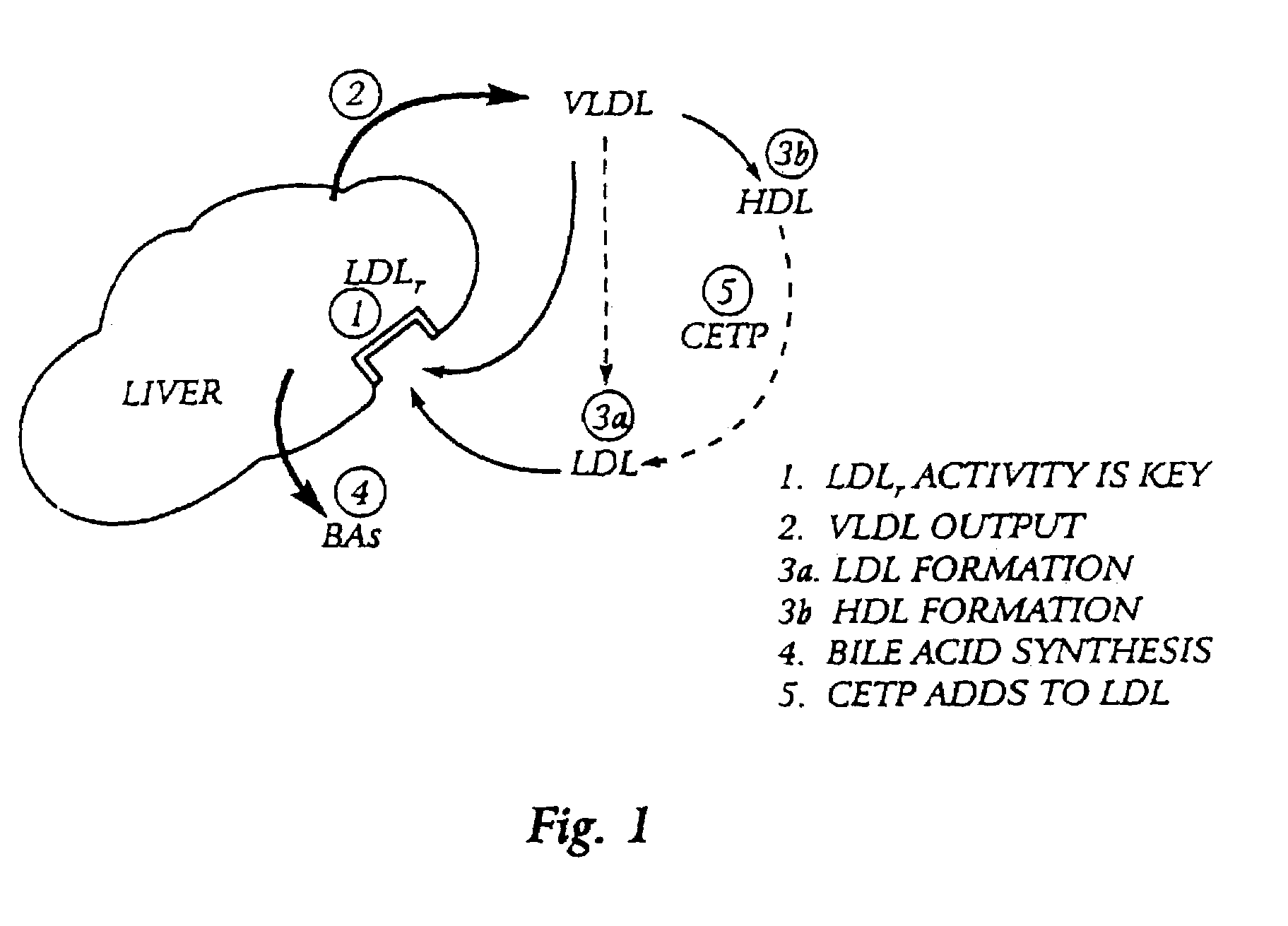Increasing the HDL level and the HDL/LDL ratio in human serium by balancing saturated and polyunsaturated dietary fatty acids
- Summary
- Abstract
- Description
- Claims
- Application Information
AI Technical Summary
Benefits of technology
Problems solved by technology
Method used
Image
Examples
example 1
Fat Blends for Increasing the HDL Concentration and the HDL / LDL Ratio
[0089]Two parts palm oil (44% palmitic acid, 9% linoleic acid) are blended with one part corn oil (11% palmitic acid, 58% linoleic acid) to provide a balanced fat blend containing approximately 33% palmitic acid (16:0) and 25% linoleic acid (18:2). When consumed as the principal and essentially the sole source of dietary fat in the daily diet, and representing approximately 30% of the dietary energy this fat blend will increase the level of HDL cholesterol in human serum and the HDL / LDL ratio compared to a similar diet in which the proportion of either palmitic acid or linoleic acid is 3-fold lower.
example 2
Other Fat Blends for Increasing HDL and the HDL / LDL Ratio
[0090]One part palm oil (44% palmitic acid, 9% linoleic acid) is blended with one part cottonseed oil (23% palmitic acid, 52% linoleic acid) to provide a fat blend containing approximately 34% palmitic acid and 31% linoleic acid. One part palm oil is blended % with one part soybean oil (10% palmitic acid, 51% linoleic acid and 7% linolenic acid) to provide a fat blend containing approximately 27% palmitic acid, 30% linoleic acid and 3% linolenic acid. Alternatively, one part coconut oil (approximately 70% lauric, myristic, and palmitic acids, and 2% linoleic acid) is blended with one part sunflower oil (6% palmitic acid, 66% linoleic acid) to provide a different balanced fat blend containing approximately 38% C12–C16 mixed saturated fatty acids and 34% linoleic acid. Alternatively, in a three component system, one part palm kernel oil (47% lauric acid, 16% myristic acid, 8% palmitic acid, and 2% linoleic acid) is blended with ...
example 3
Oxidation-Resistant Fat Blends for Food Preparation as Well as for Increasing the HDL Concentration and the HDL / LDL Ratio
[0091]Consistent with Examples 1 and 2, blends useful for increasing the HDL level and the HDL / LDL ratio in human serum include four to nine parts palm olein (39% palmitic acid, 11% linoleic acid) blended with one part of corn oil (11% palmitic acid, 58% linoleic acid) to provide a dietary fat blend containing approximately 33% to 36% palmitic acid and 20% to 16% linoleic acid. Similarly, two parts palm olein are blended with one part of corn oil to provide a fat blend containing approximately 30% palmitic acid and 27% linoleic acid. Likewise, as illustrated in Example 1, two parts palm oil are blended with one part corn oil for use as a dietary fat. These and other blends of vegetable fats and oils have been found to be valuable as ingredients in baked, fried, and other prepared foods, e.g., salad dressings, desserts, etc. because of the increased oxidative stabi...
PUM
| Property | Measurement | Unit |
|---|---|---|
| Fraction | aaaaa | aaaaa |
| Fraction | aaaaa | aaaaa |
| Fraction | aaaaa | aaaaa |
Abstract
Description
Claims
Application Information
 Login to View More
Login to View More - R&D
- Intellectual Property
- Life Sciences
- Materials
- Tech Scout
- Unparalleled Data Quality
- Higher Quality Content
- 60% Fewer Hallucinations
Browse by: Latest US Patents, China's latest patents, Technical Efficacy Thesaurus, Application Domain, Technology Topic, Popular Technical Reports.
© 2025 PatSnap. All rights reserved.Legal|Privacy policy|Modern Slavery Act Transparency Statement|Sitemap|About US| Contact US: help@patsnap.com

